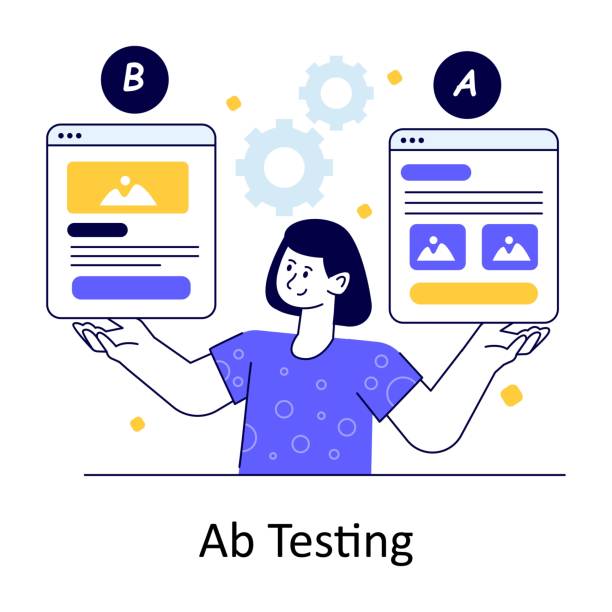
Paid Media: 13 Best Practices for Setting Up and Managing PPC Campaigns
WHAT IS PAID MEDIA?
Paid media is any marketing channel you spend money to feature on. This includes channels like pay-per-click (PPC) advertising, social media ads on platforms like Meta, LinkedIn, and video advertising on platforms like YouTube. Unlike traditional offline paid media such as magazines and billboards, where measuring return on investment (ROI) was often a complex task, online and digital channels provide a distinct advantage. They offer more comprehensive and precise tracking methods, allowing for a clearer assessment of campaign effectiveness and ensuring that resources are allocated optimally.
1. ENSURE YOU BEGIN IN THE RIGHT CHANNEL
The best place to start is usually the place where much of your target audience can be found.
We believe in launching campaigns in the search channels first. Search channels refer to online platforms that help users find specific information, products, or services through keyword-based queries. One prominent example of a search channel is a search engine like Google. Because search channels reach users who are actively searching online for specific products, services, or information, this indicates a high level of intent, making it more likely for the users to convert.
Despite search channels being our recommended advertising channel to start with, your unique audience might gravitate more towards Meta, LinkedIn, or another channel. So, before you begin planning your launch strategy, it’s important to identify your customers’ preferred channel(s) first.
Figure 1. Example of Search Ads on Google

2. HAVE A CLEAR OBJECTIVE
Having a clear objective for your paid media campaigns is critical as it will help determine what kind and how many campaigns you will run. So, start by defining specific goals. For example, is it lead generation? Sales? Or maybe brand awareness?
When setting goals, make them SMART: Specific, Measurable, Achievable, Relevant, and Time-bound. This framework provides a clear roadmap for success. For instance, instead of a broad aim like “increase leads,” a SMART goal would be “generate 100 new leads per week through paid search campaigns within the next 90 days.”
Keep in mind: timing and adaptability are crucial aspects of setting and achieving goals in a paid media campaign. At the outset of a new campaign, objectives may differ from those established 90 days in. So, as the campaign progresses, be prepared to adjust and refine these goals based on the data and insights gathered along the way. This will help ensure that your efforts remain aligned with the evolving needs and dynamics of your target audience.
3. DEFINE THE RIGHT METRICS TO MEASURE SUCCESS
Make sure the metrics you’ll use to measure the success of your campaigns are tied to your business goals and reflect your bottom line. For example, it can be cost-per-acquisition, average order value, and/or return on advertising spend (ROAS).
4. ENSURE CONVERSION TRACKING IS IN PLACE
Ensuring conversion tracking is in place and measuring the conversion actions you want is absolutely crucial for the success of your paid media campaigns. It allows you to measure the effectiveness and quantify the impact of your ads, optimize strategies, and allocate budget where it generates the highest return on your investment.
5. DETERMINE YOUR ACCOUNT STRUCTURE
Account structure is an oftentimes neglected step of the process though it is fundamental to the success of your PPC campaigns. It is how your campaigns will be organized. Do it right, and managing your campaigns will be easy. Do it wrong, and managing your campaigns will be challenging and time-consuming.
Structure your account based on your services and product offerings. If you think your bestselling Product 1 will perform differently than your newly launched Product 2 (for example, due to different demand, price point, or conversion rate), put them into separate campaigns. So, if there is a situation when you want to scale your investment into Product 1 and reduce investment into Product 2, you will be able to easily do that at the campaign level.
Here are some of the examples of how you might want to structure your paid search account:
- Example 1: Brand, Generic, Competitor campaigns
- Example 2: Product 1 Generic, Product 2 Generic, Product 3 Generic
- Example 3: Geo 1 Brand, Geo 2 Brand, Geo 1 Generic, Geo 2 Generic
For paid social accounts, your account structure can be as simple as Prospecting and Retargeting.
Figure 2. Example of Search Account Structure

6. CHOOSE THE RIGHT KEYWORDS
If you are planning on launching a search campaign to show your ads to people actively searching online for your products or services, you need to know what precisely people are searching for in order to best select keywords you want to target. Targeting the right keywords will help attract the right audience. When researching and selecting keywords, look for terms that are relevant to your industry and business. Also think about what specific terms your customers will use when describing your products and services.
7. GROUP KEYWORDS BY THEME
Before you can begin targeting the keywords you selected, you need to place them into distinct ad groups. This is another frequently neglected step but we’ve found that organizing keywords into tightly themed and right-sized ad groups is a surprisingly effective tool in paid media campaigns. When done right, you can achieve the best possible match between what the user is looking for and your ads. Result? Lower costs, reduced user friction, and more revenue.
BONUS TIPS:
- Be thoughtful about the size of your ad groups. The bigger the ad group, the harder it is to customize the ad and send the user to a great landing page.
- If you think a keyword will perform differently or an ad headline will be significantly different from others in its group, those keywords should not be in the same ad group.
8. CUSTOMIZE AD COPY TO AD GROUPS
Your account’s campaign structure will inform how many types of ads you need to draft. When drafting ad copy, think of all the keywords you are running. What ad does the user expect to see when they search that keyword? What experience do they expect to get after they click on the ad? This will determine the success of your ads. For example, if a user is searching using a product-specific search term, you do not want to just send them to the homepage. Instead, you want to send them to the product-specific page.
9. A/B TEST YOUR AD COPY
To make sure you maximize your investment and allocate your budget to the best performing areas, test various ad templates against one another. We recommend drafting at least 3 ad templates. For example:
- Ad template 1: Emphasizing customer service value propositions
- Ad template 2: Emphasizing easy and fast delivery
- Ad template 3: Emphasizing expertise/unique value propositions
BONUS TIPS:
- The easiest way to map out how many ad templates you need is to map landing pages to your ad groups (matching to the intent of the terms inside): each landing page will need a set of ad templates.
- Include the keywords you are running in the ad copy text as much as possible, but without sounding too repetitive.
10. KEEP YOUR TOTAL SPEND LOW WHILE OPTIMIZING
Your PPC campaigns are rarely expected to achieve your desired goals right out of the gate, and that is normal. Success requires building a base of quality and trust for search engines. During this time, keep your total spend low by investing in the ads that perform well from the start and taking low-performing ads out of rotation. You can reintroduce them later as you continue to optimize and refine your campaigns.
11. ANALYZE AND ELIMINATE WASTE
It’s a given that some keywords, ad groups, and ads won’t perform as well as others and will require further fine-tuning. Regularly analyze your campaigns’ performance to identify areas of wasted spend. Then tighten up the campaign as needed to plug the revenue drain.
BONUS TIPS:
- After the campaigns’ launch, check your keyword bids frequently to ensure keywords are above the first page bid. Check every day in the first week and twice a week after that.
- Regularly block irrelevant search queries to ensure relevant traffic is matching to your keywords. Do it after the first couple of days of launch and then weekly thereafter.
12. KEEP EXPANDING ON SUCCESS
Regularly identify the keywords, ad groups, and campaigns that perform well and increase their budget to maximize return. Doing this quickly and efficiently will allow you to respond to changes in the market for your products and the bidding market within the paid media platform.
13. GO INTO OTHER CHANNELS
Once your PPC campaigns in your first channel are turning a solid profit, it’s time to grow that success even more. Start with adding new search channels. Then, if it fits with your goals, add social channels, remarketing, and more.
CONCLUSION
Mastering PPC campaigns is a dynamic process that demands planning and constant refinement. By setting clear objectives, conducting thorough research, and optimizing every aspect from ad copy to landing pages, you can maximize your ROI. Regular monitoring, adaptation to market trends, and utilizing conversion tracking will keep campaigns on the path to success. Remember, it’s not just about spending, but spending wisely. With these best practices in hand, your small business can navigate the PPC landscape with confidence and efficiency, driving meaningful results and growth.
Need help with PPC management for your small business?
Talk to us to see if a free digital marketing audit would help you with your marketing efforts.
Want to learn more? Read a B2B paid media success story for a manufacturer in the energy industry or how our paid media approach helped this B2C client in the aftermarket auto industry.

